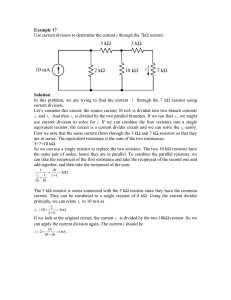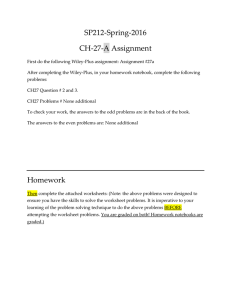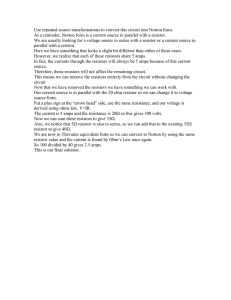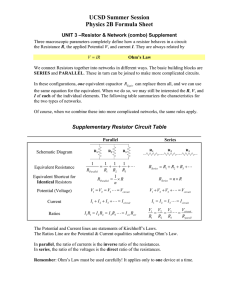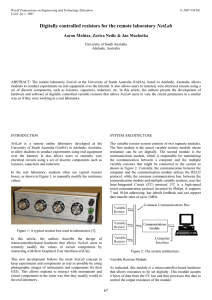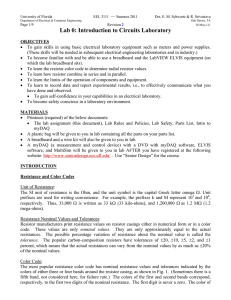Circuits Worksheet
advertisement
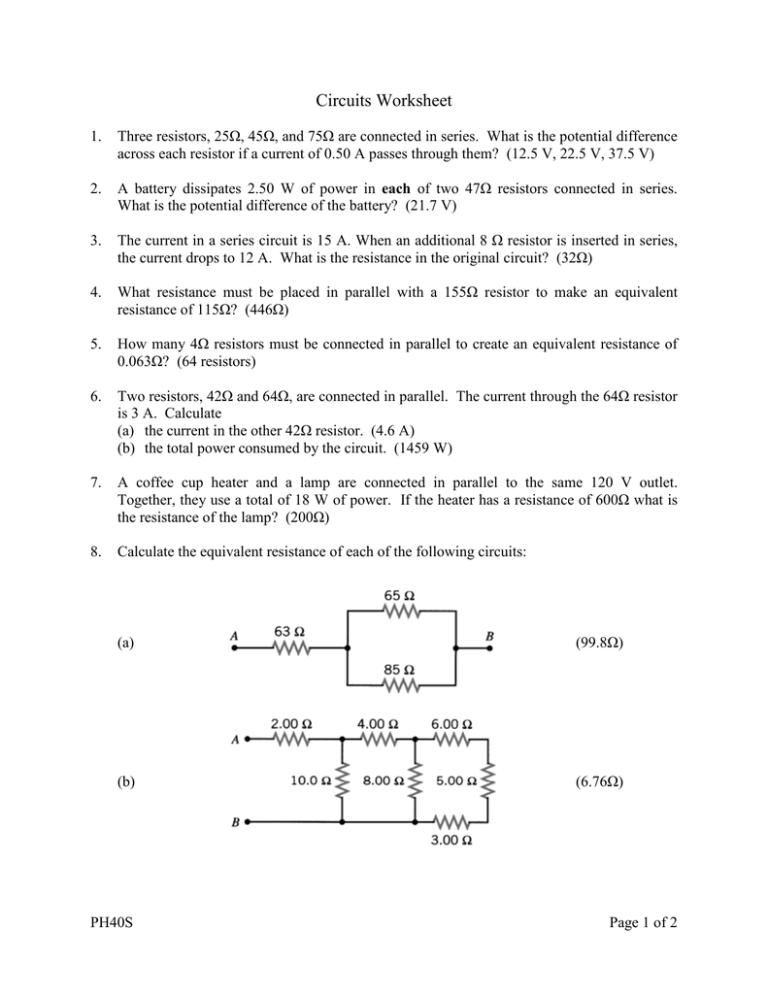
Circuits Worksheet 1. Three resistors, 25Ω, 45Ω, and 75Ω are connected in series. What is the potential difference across each resistor if a current of 0.50 A passes through them? (12.5 V, 22.5 V, 37.5 V) 2. A battery dissipates 2.50 W of power in each of two 47Ω resistors connected in series. What is the potential difference of the battery? (21.7 V) 3. The current in a series circuit is 15 A. When an additional 8 Ω resistor is inserted in series, the current drops to 12 A. What is the resistance in the original circuit? (32Ω) 4. What resistance must be placed in parallel with a 155Ω resistor to make an equivalent resistance of 115Ω? (446Ω) 5. How many 4Ω resistors must be connected in parallel to create an equivalent resistance of 0.063Ω? (64 resistors) 6. Two resistors, 42Ω and 64Ω, are connected in parallel. The current through the 64Ω resistor is 3 A. Calculate (a) the current in the other 42Ω resistor. (4.6 A) (b) the total power consumed by the circuit. (1459 W) 7. A coffee cup heater and a lamp are connected in parallel to the same 120 V outlet. Together, they use a total of 18 W of power. If the heater has a resistance of 600Ω what is the resistance of the lamp? (200Ω) 8. Calculate the equivalent resistance of each of the following circuits: (a) (99.8Ω) (b) (6.76Ω) PH40S Page 1 of 2 (c) 9. (4.5Ω) Calculate the power dissipated in the 5.0Ω resistor in the following circuit. (2.2 W) 10. If the current through the 8.00Ω resistor in the following circuit is 0.5 A, what is the current in the 9.00Ω resistor? (2.11 A) PH40S Page 2 of 2


